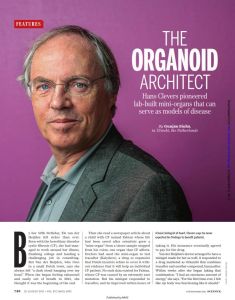Join getAbstract to access the summary!

Join getAbstract to access the summary!
Gunjan Sinha
The Organoid Architect
Han Clevers pioneered lab-built mini-organs that can serve as models of disease
Science, 2017
What's inside?
Mini-organs grown in the lab from biopsy samples offer exciting new possibilities to patients and scientists.
Recommendation
No, this isn’t science fiction – but the breakthroughs this Science magazine article describes are as new and exciting. It helps that writer Gunjan Sinha opens with a life and death story, but the possibilities organoids offer are so immense the article doesn’t really need the hook. Who wouldn’t get excited over the possibility of growing “mini-organs” to help test medications for people with serious diseases or failing organs? The fact that organoids allow highly personalized medical treatment and can be stored easily makes them that much more intriguing. getAbstract recommends this article to anyone interested in health, medicine, science or, yes, science fiction.
Summary
About the Author
Gunjan Sinha is a freelance writer living in Germany. She has written on science for Wired, Scientific American, Science, and other publications.

















Comment on this summary